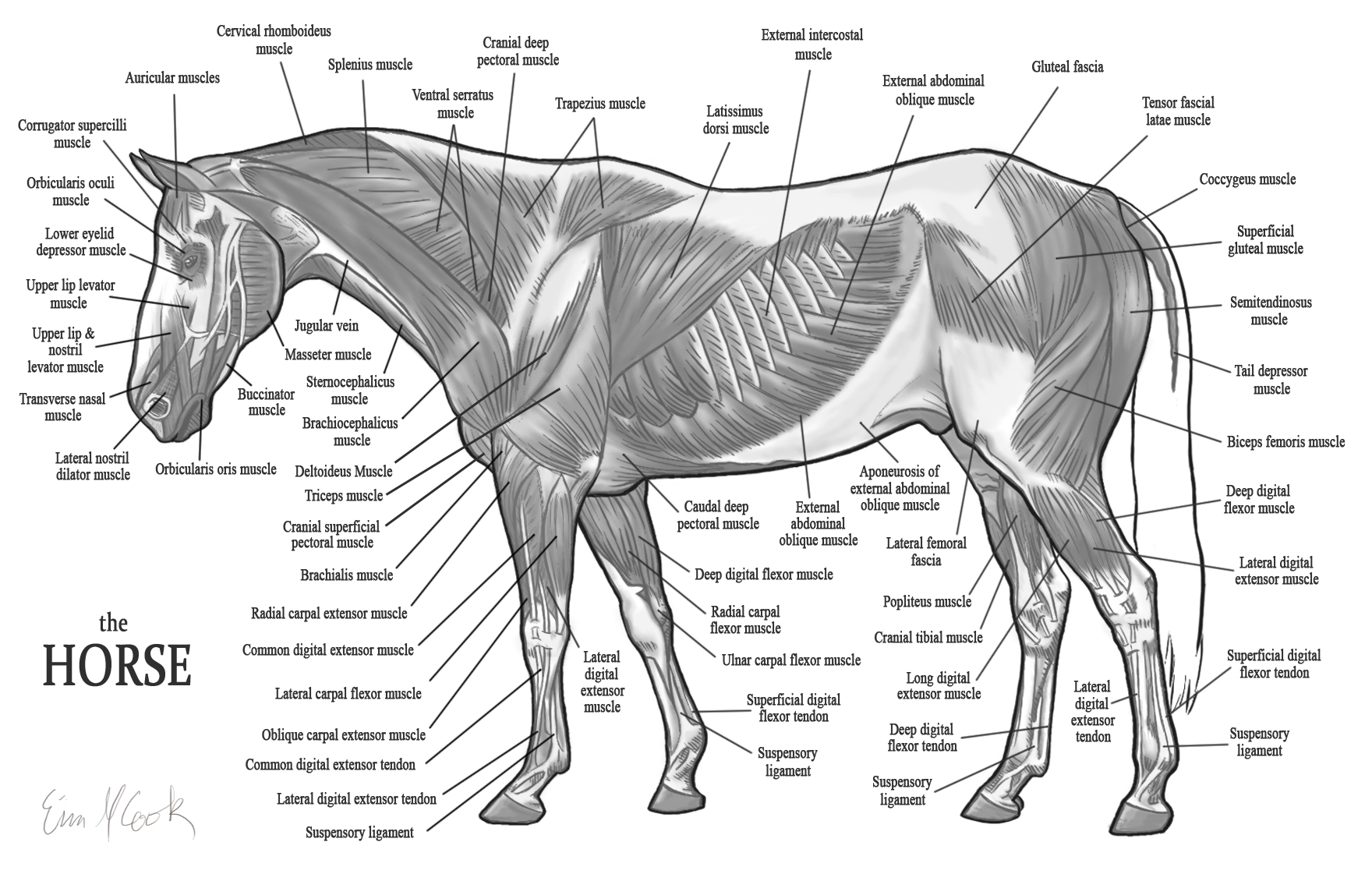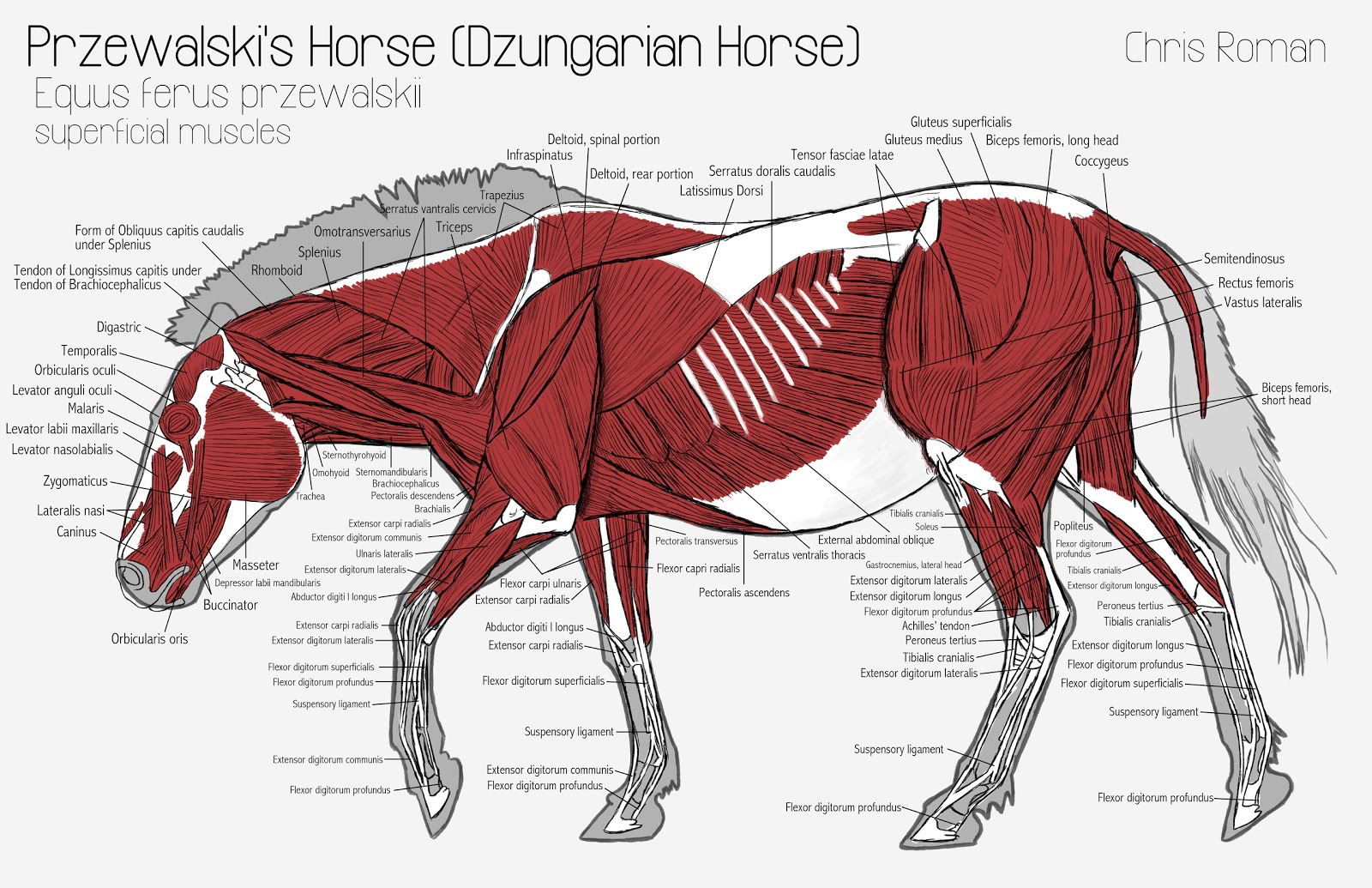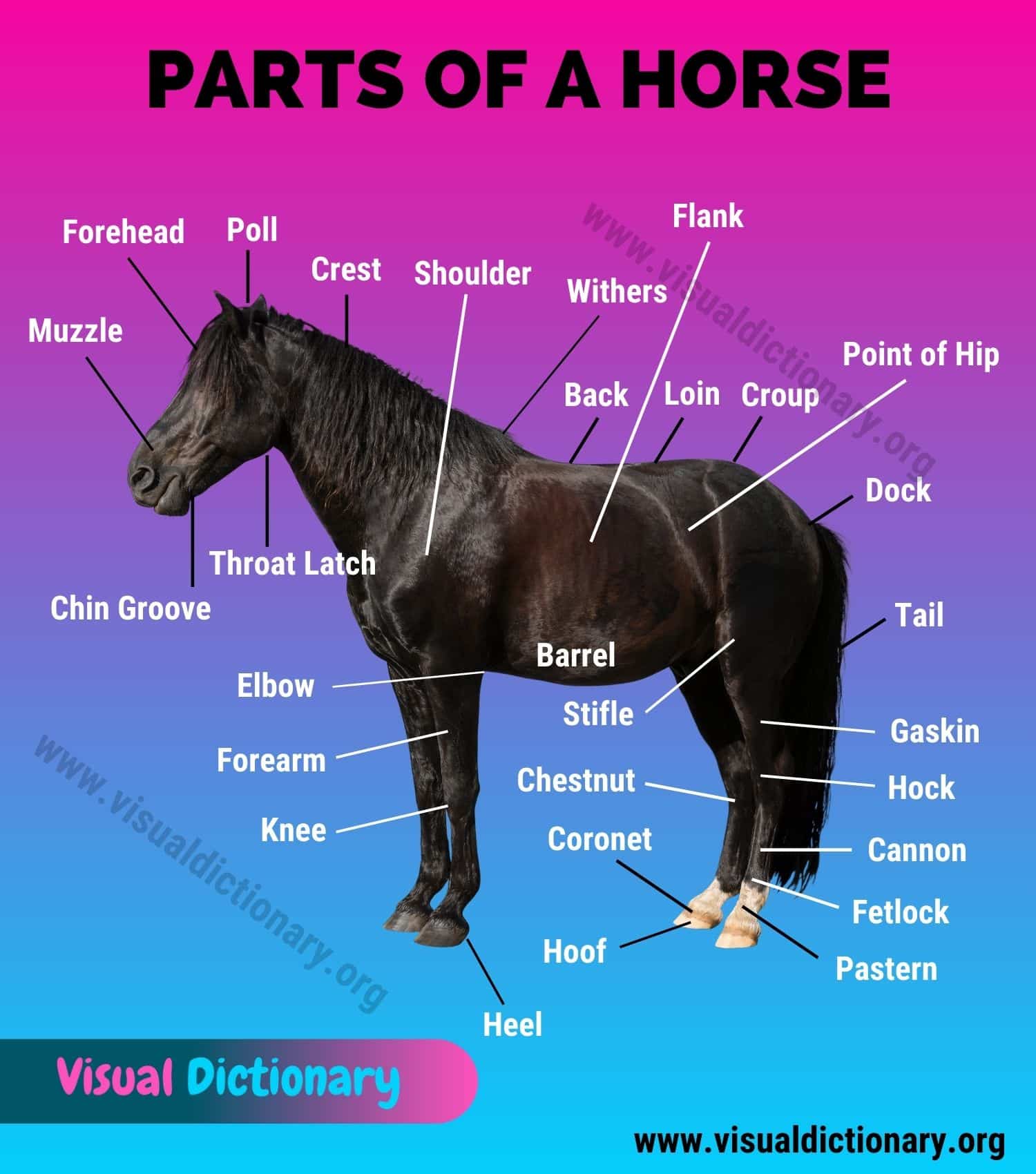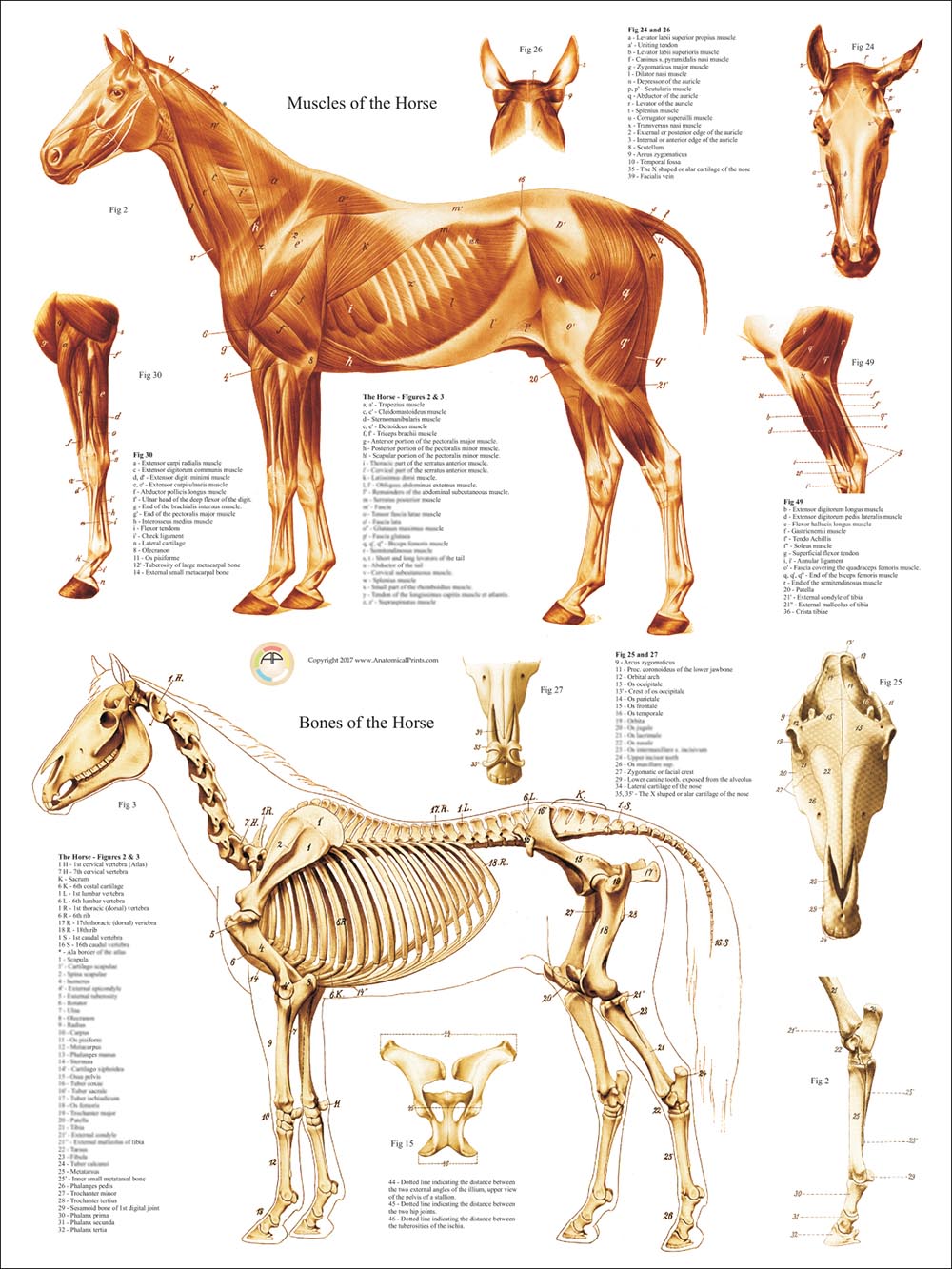Introduction
A horse's anatomy is a fascinating subject that every equestrian enthusiast should be familiar with. Understanding the structure and function of a horse's body can help in caring for them, training them, and even riding them more effectively. In this article, we will explore the various parts of a horse's anatomy, from head to tail.

The Head
The head of a horse is a complex structure that houses many important features. The most prominent part of the head is the muzzle, which includes the nostrils and the upper lip. Horses use their muzzle to explore their surroundings and to eat. The eyes, located on the sides of the head, provide horses with a wide field of vision, allowing them to detect potential threats. The ears are also vital sensory organs that can rotate independently to pick up sounds from various directions.

The Neck
The neck of a horse serves multiple purposes. It provides support for the head and allows the horse to move it up, down, and sideways. The neck also plays a crucial role in balance and coordination during movement. Horse owners often pay close attention to the neck's musculature, as strong and well-developed neck muscles are essential for a horse's overall strength and performance.

The Back and Spine
The back and spine of a horse are critical for its overall structure and movement. The spine consists of a series of individual bones called vertebrae, which are connected by flexible joints. The back muscles, located on either side of the spine, provide support and allow the horse to bend and flex. Proper care of the back and spine is essential to prevent injuries and maintain the horse's overall well-being.

The Legs
The legs of a horse are designed for speed, power, and agility. Each leg is composed of several bones, including the upper arm bone, lower arm bones, and various bones in the hoof. The legs are supported by a complex network of tendons, ligaments, and muscles, which allow the horse to move with grace and strength. Proper hoof care is vital for maintaining the health and soundness of a horse's legs.
The Hooves
The hooves of a horse are incredibly important for its overall well-being. They protect the sensitive structures inside the foot and provide support and shock absorption during movement. Hooves are made of a tough material called keratin and grow continuously. Regular hoof care, including trimming and shoeing, is necessary to prevent issues such as lameness and hoof imbalances.

The Digestive System
Horses have a unique digestive system designed for a herbivorous diet. Their long, complex digestive tract allows them to efficiently extract nutrients from plant material. The process begins in the mouth, where horses chew their food to break it down before it enters the stomach. From there, the food travels through the small and large intestine, where nutrients are absorbed, and waste products are eliminated.

The Respiratory System
The respiratory system of a horse is responsible for delivering oxygen to the body and removing carbon dioxide. Horses have a large lung capacity, allowing them to take in significant amounts of air with each breath. The air enters the respiratory system through the nostrils, travels down the trachea, and into the lungs. The exchange of gases occurs in the small, delicate structures called alveoli within the lungs.

The Circulatory System
The circulatory system of a horse is responsible for transporting oxygen, nutrients, and waste products throughout the body. The heart, located in the chest cavity, pumps blood to various organs and tissues through a network of blood vessels. Horses have a relatively large heart compared to their body size, reflecting their athletic capabilities.

The Muscular System
Horses are known for their powerful muscles, which enable them to perform various physical tasks. The muscular system of a horse is composed of different muscle groups, including those responsible for locomotion, stability, and posture. Well-developed muscles are crucial for a horse's performance and overall athletic ability.

The Nervous System
The nervous system of a horse is incredibly complex and controls all bodily functions. It consists of the brain, spinal cord, and peripheral nerves. The brain acts as the central command center, receiving and processing information from the environment and sending signals to various parts of the body. Horses have highly developed senses, allowing them to be aware of their surroundings and respond accordingly.

The Reproductive System
The reproductive system of a horse is responsible for the creation of new life. Stallions have external reproductive organs, including the penis and testicles, while mares have internal reproductive organs, including the uterus and ovaries. Breeding and reproduction in horses require careful management and monitoring to ensure successful outcomes.

Conclusion
Understanding horse anatomy is crucial for anyone involved in the world of horses, whether as an owner, rider, or trainer. By familiarizing yourself with the different parts of a horse's body and their functions, you can better care for and communicate with these magnificent animals. Remember to always prioritize the well-being and health of horses in all your interactions with them.